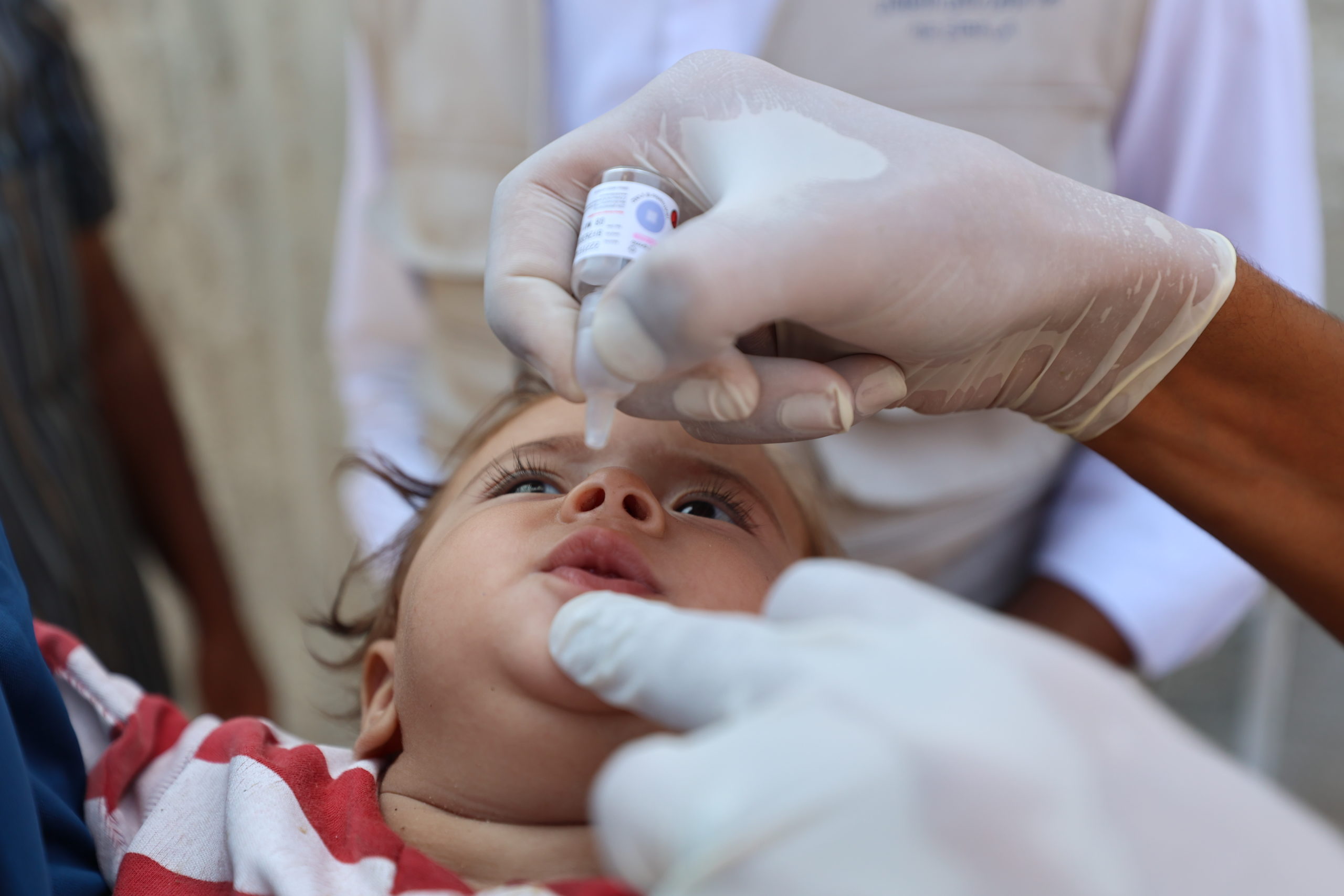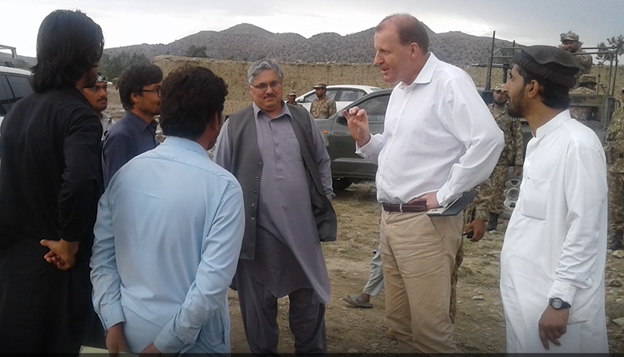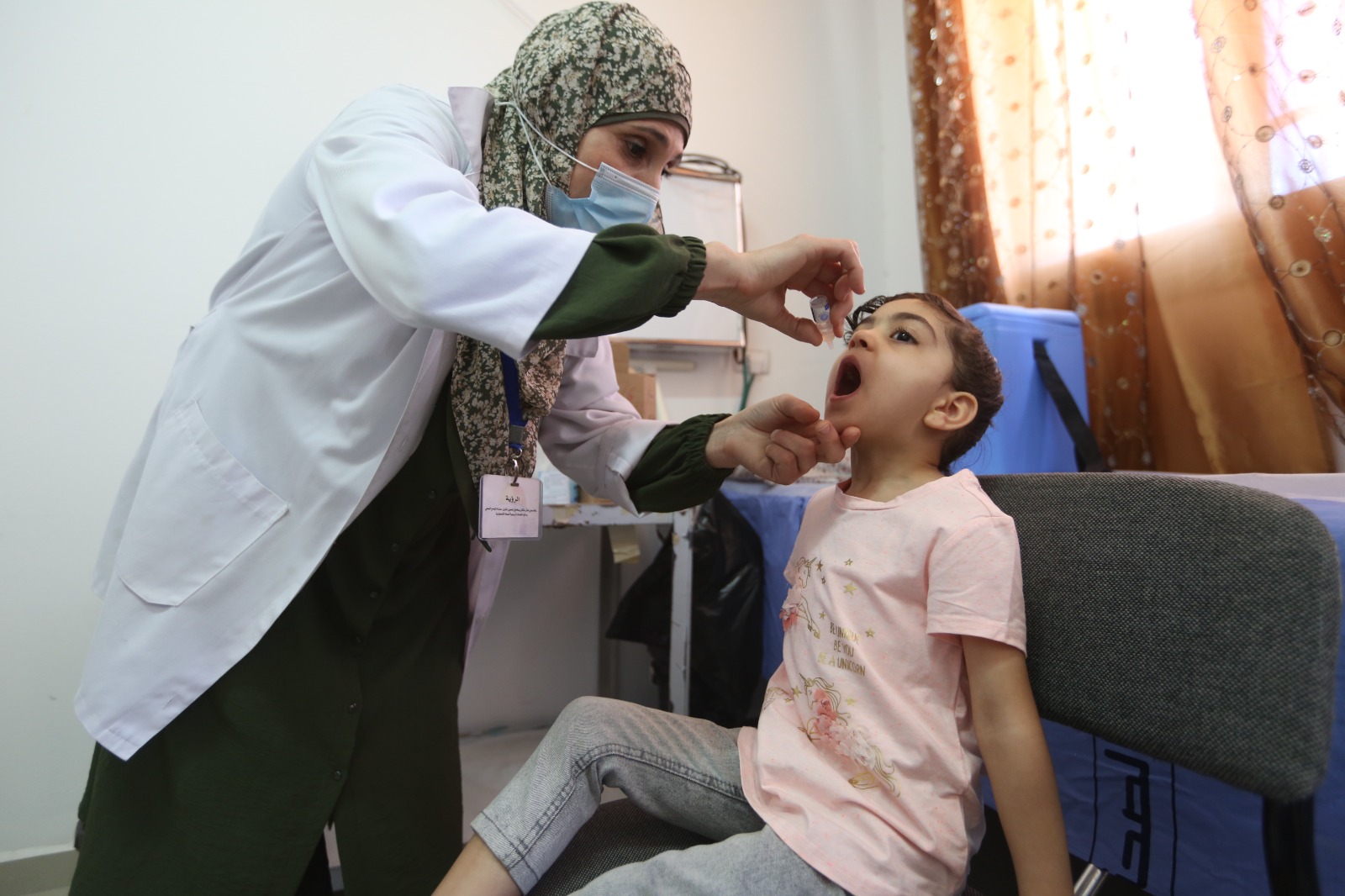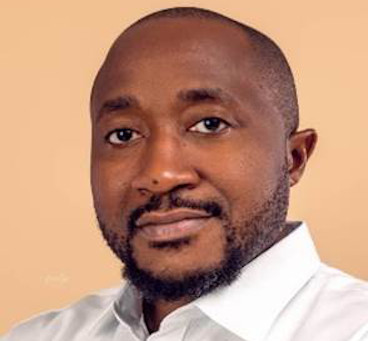Over 187 000 children under ten years of age were vaccinated with novel oral polio vaccine type 2 (nOPV2) in central Gaza during the first phase of a two-round polio vaccination campaign, conducted between 1–3 September 2024. Vaccination coverage in this phase exceeded the initial estimated target of 157 000 children due to population movement towards central Gaza, and expanded coverage in areas outside the humanitarian pause zone.
To ensure no child is missed in this area, polio vaccination will continue at four large health facilities in central Gaza over the next few days. Vaccine doses have been supplied to these sites to meet any additional needs.
“It has been extremely encouraging to see thousands of children being able to access polio vaccines, with the support of their resilient families and courageous health workers, despite the deplorable conditions they have braved over the last 11 months. All parties respected the humanitarian pause and we hope to see this positive momentum continue,” said Dr Richard Peeperkorn, WHO Representative for the occupied Palestinian territory.
The first phase of the campaign was conducted by 513 teams, consisting of over 2180 health and community outreach workers. Vaccination was provided at 143 fixed sites, including hospitals, medical points, primary care centres, camps where displaced people are living, key public gathering spaces such as temporary learning spaces, food and water distribution points, and transit routes leading from central towards northern and southern Gaza. Additionally, mobile teams visited tents and hard to-reach areas to ensure they reached families who were unable to visit fixed sites. The presence of a substantial number of children eligible for vaccination who were unable to reach vaccination sites due to insecurity, necessitated special missions to Al-Maghazi, Al-Bureij and Al-Mussader – areas just outside of the agreed zone for the humanitarian pause.
Preparations are underway to roll out the next phase of the campaign, which will be conducted in southern Gaza from 5–8 September 2024, targeting an estimated 340 000 children below ten years of age. Some 517 teams, including 384 mobile teams, will be deployed. Nearly 300 community outreach workers have already begun outreach to families in southern Gaza to raise awareness about the campaign, while 490 vaccine carriers, 90 cold storage boxes, and other supplies have been transferred to Khan Younis for distribution to vaccination sites.
The third and last phase of the polio vaccination campaign will be implemented in northern Gaza from 9–11 September 2024, targeting around 150 000 children.
At least 90% vaccination coverage during each round of the campaign is needed to stop the outbreak, prevent the international spread of polio and reduce the risk of its re-emergence, given the severely disrupted health, water and sanitation systems in the Gaza Strip. Vaccination coverage will be monitored throughout the campaign, and, when necessary, vaccinations will be extended to meet coverage targets as part of flexible strategies to ensure every eligible child receives their vaccine dose.
The two-round campaign, being conducted by the Palestinian Ministry of Health (MOH), in collaboration with the World Health Organization (WHO) and United Nations Children Fund (UNICEF), the United Nations Relief and Works Agency for Palestine Refugees (UNRWA) and many partners, aims to provide two drops of nOPV2 to around 640 000 children during each round.
“The successful delivery of the first phase of the campaign in central Gaza is a culmination of immense coordination among various partners, including the Global Polio Eradication Initiative (GPEI) and donors, and underscores the importance of peace for the health and well-being of people in Gaza. We call on all parties to continue fulfilling their commitment to the humanitarian pauses as the second phase of the campaign begins tomorrow,” said Dr Peeperkorn.
Notes to editors
- The campaign is part of an urgent response to prevent the spread of polio after circulating variant poliovirus type 2 (cVDPV2) was detected in Gaza, after 25 years of being polio-free. cVDPV2 has been detected in six environmental samples – or wastewater – collected from central Gaza in June 2024. Gaza has reported four cases of children with acute flaccid paralysis (AFP), including one case of confirmed polio in a child who tested positive for circulating variant poliovirus type 2 (cVDPV2). Two of the reported cases tested negative for poliovirus. Laboratory results are pending on samples from the fourth AFP case.
- Novel oral polio vaccine (nOPV2) is a polio vaccine being used to stop transmission of variant poliovirus type 2 (cVDPV2), currently the most prevalent form of the variant poliovirus.
- nOPV2 is safe and effective and offers protection against paralysis and community transmission. It is the vaccine globally recommended for variant type 2 poliovirus outbreaks – the type that has been found in the recent samples from Gaza.



